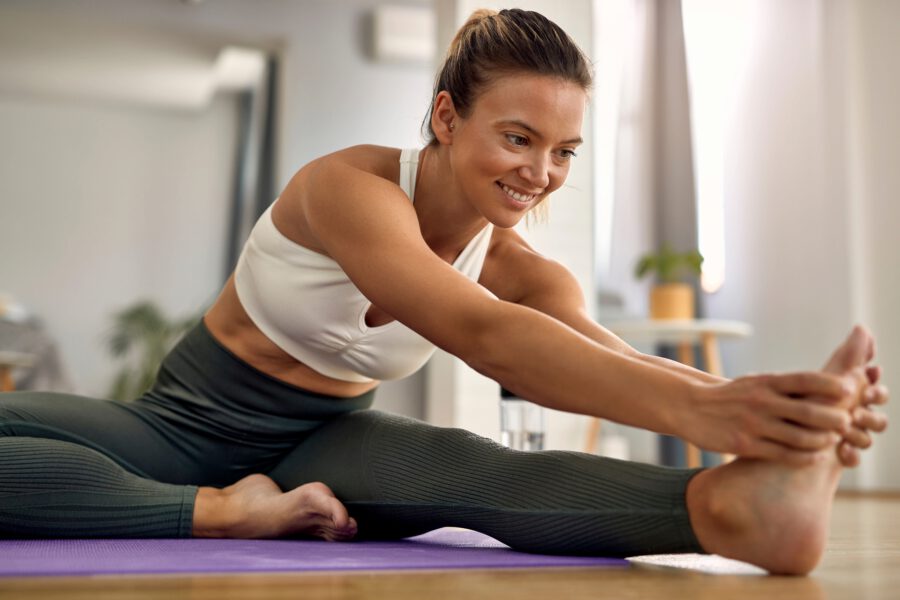Mastering Mobility: The Ultimate Guide to Flexibility for Beginners and Beyond
Flexibility is often the unsung hero of fitness, quietly influencing our strength, endurance, and overall performance. Whether you're a beginner or a seasoned athlete, enhancing your mobility can unlock new levels of physical prowess and prevent injuries. In this guide, we will delve into the science of flexibility, explore effective techniques, and provide actionable steps to help you achieve your mobility goals.
Flexibility refers to the ability of your muscles and joints to move through their full range of motion. This aspect of fitness is crucial for maintaining functionality and preventing injuries. Improved flexibility can enhance your performance in other physical activities, leading to a more balanced and efficient body.
Flexibility is not just for gymnasts or dancers; it plays a vital role in everyday activities. Being flexible helps reduce the risk of injuries, improves posture, and decreases muscle soreness. By increasing your range of motion, you can perform exercises with better form and efficiency, leading to greater strength and endurance gains.
One common misconception is that flexibility is only necessary for certain sports or activities. However, flexibility benefits everyone by improving overall health and well-being. Another myth is that you need to stretch extensively before workouts. While dynamic stretching can be beneficial, incorporating flexibility training into your routine is more effective for long-term gains.
Flexibility is primarily influenced by the length and elasticity of muscles and tendons. Regular stretching can lead to increased muscle elasticity and joint mobility, which are essential for optimal physical performance. According to studies, incorporating flexibility training can significantly enhance athletic performance and reduce the risk of injury.
Beginning a flexibility routine can be daunting, especially if you are unfamiliar with the exercises. However, with the right approach, you can gradually increase your flexibility and enjoy the numerous benefits it offers.
Here’s a quick stretching routine you should try in the morning:
Setting realistic and achievable goals is crucial when starting your flexibility journey. Begin by assessing your current level of flexibility and identify areas that need improvement. Setting small, incremental goals will help you stay motivated and track your progress over time.
When selecting exercises, it's important to focus on ones that target your specific needs. For beginners, basic stretches such as Hamstring Stretch or Quadriceps Stretch are excellent starting points. As you become more flexible, you can incorporate more advanced exercises into your routine such as Camel Pose or Squat T Spine Rotation Hold.
Consistency is key to improving flexibility. Aim to incorporate flexibility exercises into your routine at least three times a week. A balanced routine should include a mix of static stretches, dynamic stretches, and mobility exercises.
There are various techniques you can use to enhance your flexibility. Each technique has its own benefits and can be incorporated into your routine for maximum effectiveness.
Static stretching involves holding a stretch for an extended period, usually around 15-60 seconds. This technique helps lengthen the muscles and improve flexibility over time. Examples include the Standing Forward Bend and the Seated Hamstring Stretch.
Dynamic stretching involves moving parts of your body through a full range of motion. This technique is particularly effective as part of a warm-up routine, as it helps prepare your muscles for activity and enhances flexibility. Examples include Leg Swings and Arm Circles.
Proprioceptive Neuromuscular Facilitation (PNF) stretching involves a combination of stretching and contracting the target muscle group. This advanced technique is highly effective for increasing flexibility. It requires a partner or resistance, making it more suitable for advanced practitioners.
Many people face challenges when trying to improve their flexibility. Identifying and addressing these challenges is crucial for making progress.
Plateaus are common in any fitness journey. If you find that your flexibility is not improving, try incorporating new exercises or techniques into your routine. Varying your routine can help stimulate muscle growth and improve flexibility.
It's normal to experience some discomfort when stretching, but it should not be painful. If you experience pain, it may indicate that you are pushing your muscles too far. Listen to your body and adjust your routine accordingly.
Maintaining motivation can be difficult, especially when progress seems slow. Setting short-term goals and celebrating small victories can help keep you motivated. Additionally, tracking your progress can provide a visual representation of your improvement.
Flexibility should be an integral part of your overall fitness routine. By integrating flexibility exercises into your workouts, you can enhance your performance and reduce the risk of injury.
Here’s a quick stretching routine you should try before bedtime:
Integrating flexibility exercises into your strength training routine can improve your overall performance. Increased flexibility allows for a greater range of motion, which can lead to more effective strength training sessions. Consider incorporating exercises such as Lunges and Squats to complement your flexibility training.
Using flexibility exercises as part of your cool-down routine can help reduce muscle soreness and improve recovery. After a workout, incorporate static stretches to relax your muscles and improve flexibility.
Flexibility exercises can also complement cardiovascular workouts. Incorporating dynamic stretches into your warm-up can improve your cardiovascular performance by preparing your muscles for activity.
Once you have mastered the basics of flexibility, you can explore more advanced techniques to further enhance your mobility.
Yoga and Pilates are excellent for improving flexibility and building core strength. These practices involve a series of poses and movements that promote flexibility, balance, and strength. Consider trying different types of yoga to find one that suits your needs.
Using props such as resistance bands and foam rollers can enhance your flexibility routine. These tools can help you achieve deeper stretches and improve muscle recovery. Consider including exercises like Foam Rolling in your routine.
Martial arts are not only great for self-defense but also for improving flexibility and coordination. Techniques such as kicks and stances require a high degree of flexibility and can be incorporated into your training for added variety.
Flexibility needs can vary significantly across different age groups. Understanding these differences can help tailor your flexibility routine to meet your specific needs.
Children are naturally more flexible than adults, but it's important to encourage them to maintain their flexibility through regular physical activity. Incorporating fun and engaging flexibility exercises can help children develop healthy habits early on.
As adults, maintaining flexibility becomes increasingly important to counteract the effects of aging and sedentary lifestyles. Regular flexibility training can help alleviate common issues such as back pain and poor posture.
For seniors, maintaining flexibility is crucial for preserving independence and mobility. Gentle stretching exercises can help improve balance, coordination, and overall quality of life.
Nutrition plays a vital role in supporting your flexibility goals. A balanced diet can enhance muscle recovery and improve overall performance.
Staying hydrated is crucial for maintaining muscle elasticity and preventing cramps. Drink plenty of water throughout the day to support your flexibility routine.
Consuming a diet rich in protein, vitamins, and minerals can support muscle growth and recovery. Foods such as lean meats, fruits, and vegetables provide the nutrients necessary for optimal muscle function.
While a balanced diet is the best way to obtain essential nutrients, supplements can also support your flexibility goals. Consider incorporating supplements such as omega-3 fatty acids and collagen to enhance muscle recovery and joint health.
A sustainable flexibility routine is key to achieving long-term success. By focusing on consistency and gradual progress, you can maintain your flexibility gains over time.
Keep a log of your flexibility routine to track your progress and identify areas for improvement. This can help you stay motivated and make necessary adjustments to your routine.
Here’s a plan for women that will help you get lean while improving your flexibility:
Here’s a plan for men that will help you get strong while improving your flexibility:
Flexibility needs can change over time due to factors such as age, lifestyle, and fitness goals. Be open to adjusting your routine to accommodate these changes and ensure continued progress.
While flexibility is important, it's essential to balance it with other fitness goals such as strength, endurance, and cardiovascular health. A well-rounded fitness routine will help you achieve optimal results.
Mastering flexibility is a vital component of any fitness routine, enhancing your strength, performance, and overall health. By incorporating the techniques and strategies outlined in this guide, you can achieve your flexibility goals and enjoy the numerous benefits of improved mobility.

